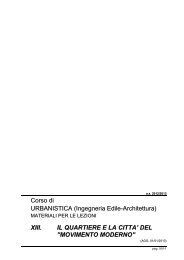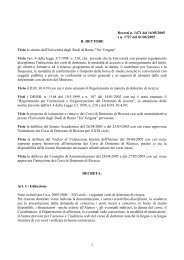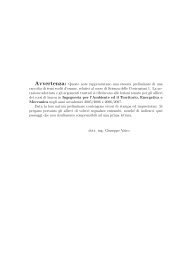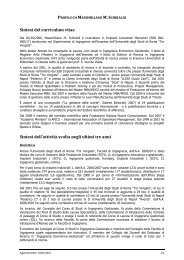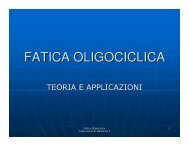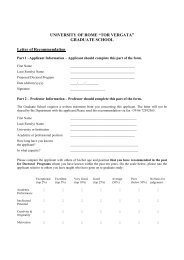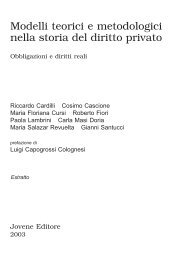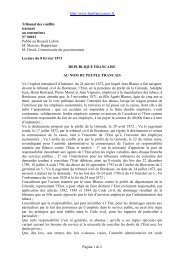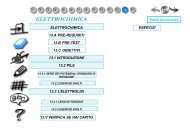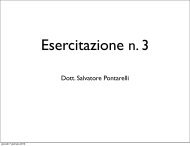Puneet Khandelwal, Soman N. Abraham and Gerard Apodaca
Puneet Khandelwal, Soman N. Abraham and Gerard Apodaca
Puneet Khandelwal, Soman N. Abraham and Gerard Apodaca
You also want an ePaper? Increase the reach of your titles
YUMPU automatically turns print PDFs into web optimized ePapers that Google loves.
oblasts <strong>and</strong> may stimulate nerve fibers, both of which lie in<br />
close proximity to the uroepithelium <strong>and</strong> express P2X <strong>and</strong> P2Y<br />
purinergic receptor subtypes (23, 30, 32, 195). NO is released<br />
from the uroepithelium in response to numerous stimuli <strong>and</strong><br />
may relax smooth muscle <strong>and</strong> modulate afferent <strong>and</strong> efferent<br />
nerve functions (22, 26). Prostagl<strong>and</strong>ins are also released from<br />
the uroepithelium in response to stretch <strong>and</strong> may play roles in<br />
modulation of nerve <strong>and</strong> detrusor functions (22). The flow of<br />
information between the uroepithelium <strong>and</strong> the other tissues is<br />
not unidirectional, inasmuch as the nerve fibers, myofibroblasts,<br />
or detrusor may release mediators that modulate the<br />
function of the uroepithelium by stimulating its sensory input<br />
pathways (Fig. 9).<br />
The sensory web in action. The potential role of the uroepithelium<br />
in signaling bladder fullness illustrates how the sensory<br />
web may work (32, 225). Filling stretches the uroepithelium,<br />
activating mechanotransduction pathways, which are<br />
likely initiated by increased tension at the apical surface of the<br />
umbrella cells. The identity of the mechanotransducer(s) is<br />
unknown, but ENaC (61, 62), other mechanosensitive ion<br />
channels (14), or apical integrins could be involved; these<br />
channels or apical integrins would then trigger the uroepithelial<br />
release of ATP from both surfaces of the epithelium. The<br />
release of serosal ATP has at least two consequences. 1) It<br />
binds to P2X2- <strong>and</strong> P2X3-containing receptors on the uroepithelium<br />
to stimulate stretch-induced exocytosis at the apical<br />
surface of the cell (225), which would increase the volume<br />
capacity of the bladder. 2) It has been proposed that the<br />
serosally released ATP binds to receptors containing P2X3<br />
subunits on the sensory afferent nerve processes (43). The<br />
degree of afferent stimulation may signal the degree of bladder<br />
filling to the central nervous system (32, 219). Consistent with<br />
this hypothesis, KO mice lacking P2X2, P2X3, orP2X2/P2X3<br />
receptor subunits can release ATP, but activation of bladder<br />
afferents is significantly decreased <strong>and</strong> KO mice show reduced<br />
micturition frequencies <strong>and</strong> increased bladder capacities (42,<br />
43, 219). ATP released from the uroepithelium may also bind<br />
to myofibroblasts or smooth muscle cells <strong>and</strong> directly alter<br />
their function. The negative regulation of this purinergic pathway<br />
is likely mediated by ectonucleotidases that are present at<br />
the serosal surface of the uroepithelium <strong>and</strong> could rapidly<br />
decrease the pool of serosal ATP during bladder contraction<br />
(136, 225), presumably when the stimulus for ATP release is<br />
decreased.<br />
The function of the ATP released from the apical surface of<br />
the umbrella cells is not known, but exposure of the mucosal<br />
surface of the epithelium to exogenous ATP or its analogs can<br />
trigger increased detrusor activity <strong>and</strong> can also stimulate increased<br />
membrane turnover in the umbrella cell layer (31, 45,<br />
173, 225). The mucosa-released ATP could increase detrusor<br />
activity by binding to purinergic receptors at the apical surface<br />
of the umbrella cell, which would induce ATP release from the<br />
serosal surface of the uroepithelium. ATP-induced ATP release<br />
has been described in cultured uroepithelium (196), <strong>and</strong> such a<br />
mechanism would act as a positive-feedback loop to further<br />
amplify the original signal <strong>and</strong> stimulate detrusor activity<br />
through the purinergic mechanism described above. The ATPinduced<br />
apical membrane turnover may exert an additional<br />
positive effect on this pathway by ensuring the constant activation<br />
of newly inserted P2X receptors <strong>and</strong> the removal of<br />
lig<strong>and</strong>-bound receptors from the cell surface.<br />
THE UROEPITHELIUM<br />
CONCLUSIONS<br />
The uroepithelium forms an effective barrier to urine, toxic<br />
metabolites, <strong>and</strong> pathogens. Work in the past decade demonstrates<br />
that this barrier is multifactorial <strong>and</strong> includes surface<br />
glycans (158, 159), membrane lipids (86, 151), tight junction<br />
proteins such as claudins (2, 168, 210), <strong>and</strong> UPs (92, 203). UPs<br />
not only contribute to the permeability barrier at the apical<br />
membrane of the umbrella cells (92), but they also function as<br />
an integral part of the innate immune system, which stimulates<br />
apoptosis when these cells are infected with bacteria (148,<br />
203). Barrier function also depends on membrane turnover at<br />
the apical surface of the umbrella cell, <strong>and</strong> recent studies are<br />
beginning to provide a general outline of how bladder filling<br />
<strong>and</strong> voiding lead to changes in exocytosis <strong>and</strong> endocytosis (15,<br />
38, 112, 205, 224, 225, 234, 235). These pathways allow the<br />
barrier to accommodate changes in urine volume, <strong>and</strong> may also be<br />
important during bladder infections <strong>and</strong> for communication between<br />
the uroepithelium <strong>and</strong> the other tissues in the bladder.<br />
Beyond the role of the uroepithelium in forming a barrier, the<br />
presence of AQPs, urea transporters, <strong>and</strong> ion channels indicates<br />
that the uroepithelium has all the machinery necessary to<br />
actively alter the composition of the urine (134, 175, 189–192,<br />
223, 234). Therefore, this tissue may play an unappreciated but<br />
important role in water, salt, <strong>and</strong> solute homeostasis.<br />
One of the most exciting functions of the uroepithelium is its<br />
potential role as a sensory transducer (11, 22). By receiving,<br />
amplifying, <strong>and</strong> transmitting information, the uroepithelium<br />
can convey information about the mucosa <strong>and</strong> urinary space to<br />
the nervous <strong>and</strong> muscular systems <strong>and</strong> help coordinate bladder<br />
function during filling <strong>and</strong> voiding. Furthermore, treatments<br />
that target the sensory input/output pathways of the uroepithelium<br />
can have clinical benefit (23, 49). For example, intravesical<br />
infusion of antimuscarinics ameliorates bladder overactivity<br />
(19, 50, 113), <strong>and</strong> administration of vanilloid compounds<br />
produces beneficial effects in patients with bladder disorders<br />
such as neurogenic detrusor overactivity or IC (13, 46, 64,<br />
161). As a better underst<strong>and</strong>ing of the input/output pathways is<br />
gained, drugs that target these pathways may provide additional<br />
novel therapies for bladder-associated diseases.<br />
ACKNOWLEDGMENTS<br />
We thank Drs. Balestreire-Hawryluk, Kong, Mitra, Veranic, <strong>and</strong> Wade for<br />
reading the manuscript <strong>and</strong> providing useful comments <strong>and</strong> suggestions.<br />
GRANTS<br />
This work was supported by a National Kidney Foundation Postdoctoral<br />
Fellowship (to P. <strong>Kh<strong>and</strong>elwal</strong>) <strong>and</strong> National Institute of Diabetes <strong>and</strong> Digestive<br />
<strong>and</strong> Kidney Diseases Grants R37 DK-54425 <strong>and</strong> R01 DK-077777 (to G.<br />
<strong>Apodaca</strong>), R01 DK-077159 (to S. N. <strong>Abraham</strong> <strong>and</strong> G. <strong>Apodaca</strong>), <strong>and</strong> R37<br />
DK-50814 <strong>and</strong> R21 DK-077307 (to S. N. <strong>Abraham</strong>). Unless indicated otherwise,<br />
all images were generated using the facilities of the Urinary Tract<br />
Epithelial Imaging Core of the National Institute of Diabetes <strong>and</strong> Digestive <strong>and</strong><br />
Kidney Diseases-funded O’Brien Pittsburgh Center for Kidney Research (P30<br />
DK-079307).<br />
DISCLOSURES<br />
No conflicts of interest are declared by the authors.<br />
AJP-Renal Physiol • VOL 297 • DECEMBER 2009 • www.ajprenal.org<br />
Review<br />
F1495<br />
REFERENCES<br />
1. Aboushwareb T, Zhou G, Deng FM, Turner C, Andersson KE, Tar<br />
M, Zhao W, Melman A, D’Agostino R Jr, Sun TT, Christ GJ.<br />
Alterations in bladder function associated with urothelial defects in<br />
uroplakin II <strong>and</strong> IIIa knockout mice. Neurourol Urodyn. In press.<br />
Downloaded from<br />
ajprenal.physiology.org<br />
on October 6, 2010



